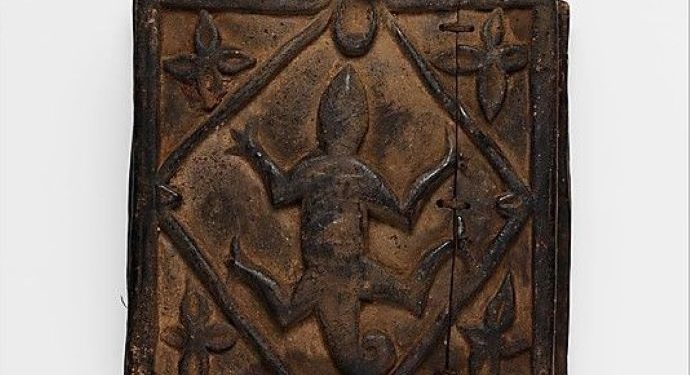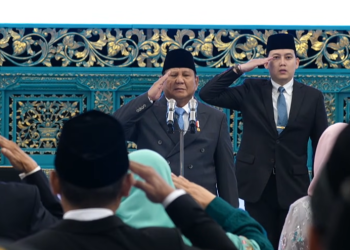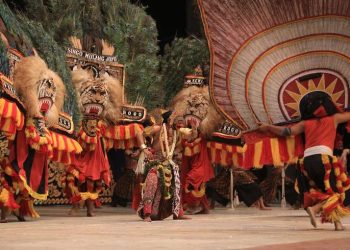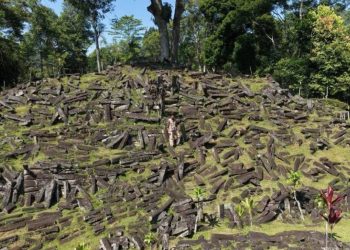Jakarta, Indonesia Sentinel — In the highlands of Mandailing Natal, North Sumatra, an ancient manuscript known as Pustaha Laklak preserves a hidden legacy of Batak Mandailing culture, written not on paper book, but on intricately folded tree bark.
Far from resembling an ordinary book, the Pustaha Laklak is a sacred accordion-style manuscript crafted from the bark of the daluang or alim tree.
Handwritten in the Batak script, these texts were traditionally kept hidden inside Bagas Godang, the wooden longhouses that served as the royal residence of local kings.
Each Pustaha is typically bound with hard wooden covers carved with symbolic or mystical motifs. The manuscripts vary in calligraphic style, influenced by the period in which they were written and the regional traditions of local datu, a shamans or scholar-priests.
What sets the Pustaha Laklak of Mandailing apart is the unique form of Batak script used, distinct from that found in other Batak regions such as Toba or Pakpak. According to research by Nasoichah (2015), the script in Mandailing evolved largely in response to writing materials and carving tools.
On bamboo, for example, the script tends to be slender and vertically oriented due to the incision technique. On bark-based pustaha, the characters are typically wider and adapted to the broader surface area.
Beyond these technical differences, variations in script also stem from diverse transmission routes of knowledge among villages. Some manuscripts even feature hybrid writing styles, reflecting cultural exchange between Batak communities through trade routes and noble intermarriages.
In essence, the Pustaha Laklak is not a static artifact, it is a living document that has evolved alongside Batak society. In Mandailing Natal, the form and content of these manuscripts evolved over time, shaped by shifts in social structure, environment, and local customs.
Read Also:
Indonesia Showcases National Heritage at 2025 Pusaka Nusantara Exhibition in Bandung
These bark books are far more than ancestral relics. They contain spells, medicinal knowledge, cosmological teachings, and layers of cultural history that were once shrouded in secrecy
A 2021 study by Nasoichah and colleagues revealed that Pustaha Laklak from Huta Godang, one of Mandailing Natal’s key traditional settlements exhibits distinct features not found in other Batak bamboo or bark manuscripts.
The texts, which date back to the 18th through the 20th centuries, reflect a rich continuity of indigenous knowledge. Among the contents are medicinal formulas, calendars for determining auspicious days, and spiritual incantations used for ceremonies and daily guidance.
But the Pustaha Laklak is not to be read casually. According to traditional norms, only select individuals, typically datu or members of the royal lineage are permitted to access its knowledge, passed down through generations under strict cultural protocols.
Even its placement within the Bagas Godang is deliberately concealed, often stored in hidden compartments or sacred chests to prevent misuse.
Local belief holds that the manuscript possesses powerful energy, one that must be respected, lest it cause unintended consequences.
Today, many pustaha are kept in museums or safeguarded by traditional communities. Yet their contents remain largely unfamiliar to the general public. What’s often overlooked is that these manuscripts represent a sophisticated system of indigenous knowledge that predates colonial education.
The Pustaha Laklak is more than just an ancient book; it is an intellectual legacy of the Batak people that spans generations. Within its folds are not only words, but entire cosmologies, life philosophies, and local histories, many of which are at risk of being forgotten.
Above all, this bark-bound manuscript reveals a profound truth: knowledge can thrive in the heart of the forest, etched into tree bark, passed down through generations of datu who never attended formal schools, yet held the keys to wisdom that modern education often overlooks.
For the Mandailing Batak, the Pustaha Laklak remains a potent symbol of identity, tradition, and ancestral wisdom, a bridge between the visible world and the mystical realms of the past.
(Raidi/Agung)























